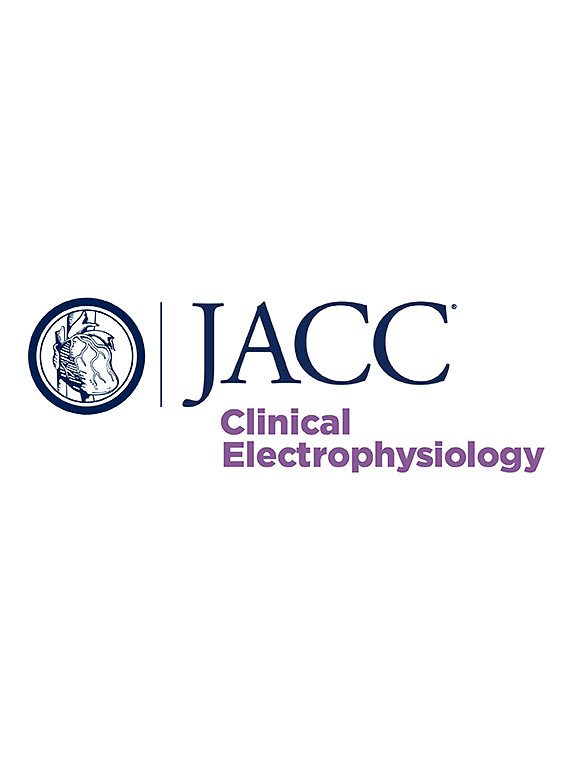患有法洛氏四联症修复术的儿童和青少年的室性心动过速基质。
IF 8
1区 医学
Q1 CARDIAC & CARDIOVASCULAR SYSTEMS
引用次数: 0
摘要
背景:经修复的法洛氏四联症(rTOF)患者发生室速(VT)的风险随时间而增加。慢传导解剖峡部(SCAI)是成年法洛氏四联症患者室速的主要基质。目前尚不清楚它们是否存在于更年轻的患者中:本研究旨在确定 rTOF 患者 VT 基底的特征:结果:共纳入 55 名患者(年龄在 15 岁以下):共纳入 55 例患者(中位年龄:15.8 岁,IQR:13.8-21.8 岁;15 例经脑室切开术修复;13 例复杂 TOF 变异型)。12名患者在初次修复时植入了右心室至肺动脉导管,或进行了早期肺动脉瓣置换术(PVR)(结论:在年轻的 rTOF 患者中,SCAI 3 是 VT 的主要基质。复杂的TOF与(再)手术的类型和时间相互关联,可能会导致年轻患者就出现SCAI 3。本文章由计算机程序翻译,如有差异,请以英文原文为准。
Ventricular Tachycardia Substrates in Children and Young Adults With Repaired Tetralogy of Fallot
Background
Patients with repaired tetralogy of Fallot (rTOF) have a time-dependent increased risk of ventricular tachycardia (VT). Slow conducting anatomical isthmuses (SCAIs) are the dominant VT substrates in adults with rTOF. It is unknown if they are present at younger age.
Objectives
This study aimed to characterize VT substrates in patients with rTOF <30 years of age.
Methods
Data of consecutive patients with rTOF aged <30 years who underwent electroanatomical mapping and programmed electrical stimulation between 2005 and 2022 were analyzed.
Results
Fifty-five patients were included (median age: 15.8 years, IQR: 13.8-21.8 years; 15 repaired via ventriculotomy; 13 complex TOF variants). Twelve patients had right ventricle-to-pulmonary artery conduits inserted during initial repair or had early pulmonary valve replacement (PVR) (<1 year after repair). Indications for electroanatomical mapping and programmed electrical stimulation were spontaneous VT, before PVR, and risk stratification in 5, 40, and 10 patients, respectively. In 16 patients (29%), SCAI 3 was identified; no other SCAI was present. Monomorphic VT was inducible in 8 and related to SCAI 3 in 7 patients. Identified VT substrates were targeted by ablation. Right ventricle-to-pulmonary artery conduit/early PVR, ventriculotomy, and complex TOF were associated with SCAI 3 in univariable analysis. During a median follow-up of 5.3 years, VT recurred in 2 patients. No patients died.
Conclusions
In young patients with rTOF, SCAI 3 is the dominant substrate for VT. Complex TOF and interrelated type and timing of (re-)operation may contribute to the development of SCAI 3 already at a young age.
求助全文
通过发布文献求助,成功后即可免费获取论文全文。
去求助
来源期刊

JACC. Clinical electrophysiology
CARDIAC & CARDIOVASCULAR SYSTEMS-
CiteScore
10.30
自引率
5.70%
发文量
250
期刊介绍:
JACC: Clinical Electrophysiology is one of a family of specialist journals launched by the renowned Journal of the American College of Cardiology (JACC). It encompasses all aspects of the epidemiology, pathogenesis, diagnosis and treatment of cardiac arrhythmias. Submissions of original research and state-of-the-art reviews from cardiology, cardiovascular surgery, neurology, outcomes research, and related fields are encouraged. Experimental and preclinical work that directly relates to diagnostic or therapeutic interventions are also encouraged. In general, case reports will not be considered for publication.
 求助内容:
求助内容: 应助结果提醒方式:
应助结果提醒方式:


